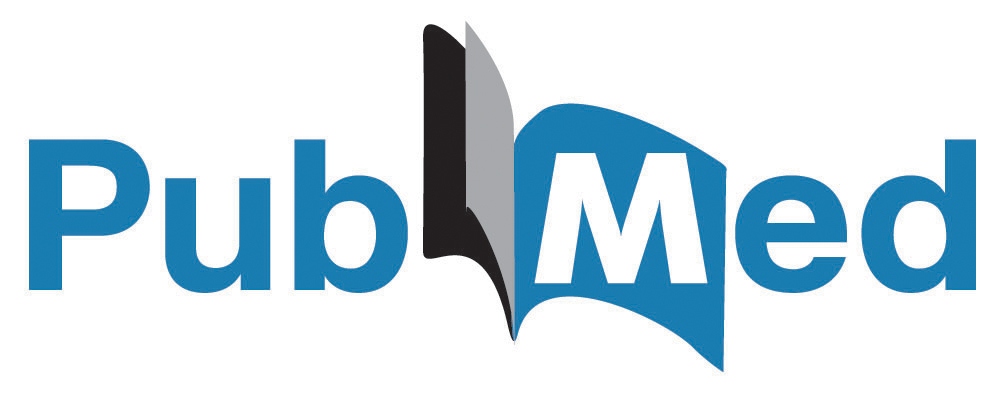Comparative Analysis of Concrete Water-Proofing Materials
Author(s): Reuben Peters Omale* and Aanu Aderonke Oguntade
Abstract
Concrete is porous when exposed to water, because water passes through its pores defacing the concrete and corroding the reinforcements, this overall effect weakens concrete. Waterproofing of concrete is very essential in building parts which are constantly exposed to moisture from ground water and rain water. This study compared bituminous felt with cementitious crystalline waterproofing materials for concrete. In this study, a particular square area of concrete slab was assumed, and a market survey was conducted to determine the cost of purchase and installation of bituminous felt and cementitious crystalline waterproofing materials for the assumed square area. The bill of quantities for both options was done to aid the comparisons and cost of maintenance of both materials. The results of the study showed that bituminous felt was the most widely used waterproofing material, while cementitious crystalline waterproofing material on the other hand is not a very popular material as most building professionals did not know about its existence. The market survey showed that it was cheaper to install cementitious crystalline waterproofing material than to install bituminous felt and the cost of maintenance of cementitious waterproofing material was also negligible compared to bituminous felt. Though cementitious crystalline waterproofing material is new in Akure market, it has a promising future in the construction industry not only in Akure but in Nigeria’s construction industry at large.
Introduction
Waterproofing is a process designed to prevent water from
penetrating a structure. It is typically done in various layers and
stages to create multiple barriers and prevent water from penetrating
the structure. A combination of such stages is referred to as creating
a ?Building Envelope?. Waterproofing becomes expedient in wet
environments or under water to specified depths. Waterproofing
protects the structural contents of a building from water infiltration
that can cause structural damage to the concrete or corrosion to the
imbedded steel. Every element of a building from the walls, roofs,
floors and so on should be water resistant or waterproof.
In construction, buildings are waterproofed using so many types
of waterproofing membranes, coatings and built-in systems. The
different waterproofing materials available today are: asphalt-andfelt built up system, bituminous membranes, polyurethane liquid
membrane, acrylic sealers, epoxy sealers, penetrating Sealers,
polyaspartic, and cementitious waterproofing, etc. Concrete is
porous, and if not waterproofed, can absorb water, waterborne
contaminants and chemicals that can cause deterioration. To protect
concrete and ensure it has a long serviceable life, waterproofing is
essential. Ensuring that water seepage in concrete can be prevented
and hydrostatic pressure resisted, as concrete can be waterproofed
from the positive (exterior) side, negative (interior) side or from
within the concrete itself (integral systems). Bituminous felt has
been used as a waterproofing system designed to protect residential
and commercial buildings. It is usually black in nature and is
often used to protect concrete surfaces from water infiltration.
One limitation of its use has been the black and grey colours, as
this has limited its use to places that would not be visible to the
general public.
Concrete is one of the prominent building materials used in Nigeria
today, it has been found to be of good compressive strength and
with the use of reinforcement of good tensile strength. Concrete
however is susceptible to cracks, shrinkage and when exposed to
moisture there is moisture expansion which weakens the concrete
and reduces the lifespan. To prolong the lifespan of concrete, it
therefore has to be waterproofed. There are various methods of
waterproofing concrete, ranging from bituminous felt, Penetrating
sealers, epoxy sealer, bentonite, to cementitious crystalline
waterproofing material. However, only two were focused on in this
research, these are: bituminous felt and cementitious crystalline
waterproofing material. These two materials were extensively
discussed in terms of what the materials are, the cost implication
of installation and maintenance.
This research is an in-depth study of bituminous felt and
cementitious crystalline waterproof coating for concrete. The
paper presents information on what exactly these materials are
in terms of their physical components, their uses and mode of
application. It also presents, detailed cost analysis (i.e. cost of
obtaining the materials, cost of installing the materials and cost of
maintaining the materials after installation), as well as the lifespan
of the two materials, which serves as the basis for drawing logical
conclusions on the comparative advantages and disadvantages of
both materials.
Problem Statement
Concrete waterproofing systems have been known to fail over the
years in Nigeria especially those used in concrete roofing. Quite
a number of concrete roofs begin to leak a couple of years after
construction, some are eventually converted to pitched roofs that
are covered with aluminium sheets. Although leakages may be as a
result of poor finishing of the waterproofing materials, it could also
be as a result of too shallow gradient especially in roofs that don?t
encourage run off. This paper looks at cementitious crystalline
waterproof coating and bituminous felt (which are modern
waterproofing materials) as a solution to concrete waterproofing
failure in Nigerian buildings.
Aim and Objectives
The aim of this study is to compare bituminous felt and
cementitious crystalline waterproofing materials for concrete,
which are both concrete waterproofing materials, with a view
towards recommending which amongst the two waterproofing
materials is more efficient.
The objectives of the study are to:
• Determine what exactly bituminous felt and cementitious
crystalline waterproofing materials are in terms of their
history, chemical and physical components, their uses and
mode of application.
• Carry out a detailed cost analysis of obtaining both materials
and installing them
• Evaluate the cost of maintenance after installation.
• Recommend the better option in-terms of cost, usage and
maintenance.
Literature Review
Introduction
Concrete is a mixture of cement, aggregates and water in controlled
proportions,[1] . The relative amount of each material (i.e. cement,
water and aggregates) affects the properties of concrete. Aggregates
should be strong and hard, to produce strong concrete outcome.
Aggregates should be clean, durable and chemically inactive so
that aggregates do not react with the concrete. Aggregates should
be stored where they will remain clean, separated from other
materials and dry. If the aggregates are wet, less water should be
used in the mix [2].
Cement reacts with water in a chemical process called hydration.
Many additional ingredients can be added to the basic concrete
mix in order to change the properties of the resulting concrete.
Some common admixtures are accelerators which speed up
the hydration process (often used in colder environments) and
retarders which slow down the hydration process (often used in
hotter environments). Plasticizers improve the workability of
wet concrete while pigments change the colour of concrete for
aesthetic reasons [3].
Properties of Concrete
Concrete has three different states: the plastic state, setting state
and the hardened state [2]. Concrete has the following properties:
• Workability
Workability means how easy it is for concrete to be placed,
handled, compacted and finished. To improve the workability
of concrete some more, cement paste should be added, well
graded aggregates should be used, and plasticizers could also
be added [2] (Cement Concrete and Aggregates Australia,
2010).
• Cohesiveness
This is how well concrete holds together when in a plastic
state.
• Strength
Concrete has strong compressive strength and poor tensile
strength. This is why concrete is usually reinforced using
steel or various fibers. Denser concrete is stronger and more
watertight (or less permeable), than less dense concrete.
• Durability
The stronger the concrete the more durable it is.
Limitations of Concrete
• Concrete has low tensile strength thus the need for
reinforcement.
• Concrete has low ductility.
• Concrete is susceptible to cracking due to drying, shrinkage
and moisture expansion.
• If soluble salt is present in concrete, it may lead to
effervescence when it comes in contact with water, this has
adverse effects on reinforcements, that is if the concrete is
reinforced.
• Concrete has low permeability when exposed to water; water
passes through its pores through capillary action. If concrete
is constantly exposed to this kind of condition, it becomes
weak and infested with lichen, moss and may disintegrate or
break, thus the need for waterproofing.
Concrete is used in several stages and aspect of construction.
Concrete is commonly used in the substructures for foundation
footing, and flooring. In the super structure, it is used for columns,
beams, suspended floors, decking and so on. One of the critical
limitations of concrete is that it is porous (i.e. allows water to pass
through) and when used as a decking for buildings, this limitation
is a very serious issue. It is this limitation that creates the need
to waterproof concrete.
Waterproofing of Concrete Roofs
Waterproofing, a process designed to prevent water from
penetrating a structure, is typically done in various layers and
stages to create multiple barriers and prevent water from seeping
into the structure. A combination of such stages is referred to
as creating a ?Building Envelope?. Often times, not enough
importance is given to this crucial aspect of construction because
there is low awareness on modern waterproofing techniques and
little expertise on some of the modern techniques of waterproofing.
Stages of Concrete Roof Waterproofing
There are basically two stages in waterproofing of concrete roofs;
there is the construction stage and post construction stage.
Construction Stage
The construction stage involves the use of the right construction
techniques and the right waterproofing method. During the
construction stage concrete should be mixed to the right watercement ratio. It should also be properly compacted as water would
flow through any pore in the concrete through capillary action.
The concrete should be allowed to cure properly; plumbing fittings
embedded in the concrete should be properly done to prevent
leakages from pipes. It is very important that concrete roofs have
the right slope (gradient). There should be no undulation in terms
of construction since this allows for free flow of water [4].
The waterproofing method to be used should have been determined
and care should be taken to apply waterproofing materials
according to the manufacturer?s instructions, as this is one of the
reasons for failure in waterproofing systems.
Post Construction Stage
Waterproofing should not only be done during construction, but
also after construction, as existing building might experience
dampness [4]. It appears better to waterproof concrete in roofs
especially when the building project is close to the end of
construction stage, before handing over is done, to prolong the
life of the water-proofing material (WPM) and encourage its
lifespan to be as long as the building. This can also be in form of
maintenance as some waterproofing materials have different life
span or effective life after which they begin to fail.
Methods of Concrete Waterproofing
Concrete roofing is the most crucial segment of a building, and
it is exposed to direct climatic variations, extremes of rainfall
and structural movements caused within the building. So every
effort should be made at the design stage to ensure that a proper
protection system has been incorporated. It has often been found
that the economic solution is not always the best solution. So, the
system, which assures maximum protection, should be selected
even though it may cost little more [4]. A building or structure
needs waterproofing as concrete is porous and will not be watertight
on its own. Flat roofs in modern times are generally constructed
of reinforced concrete. This material removes all the problems
of flat roofs except that the roof should be made water proof by
employing any of the various methods available for waterproofing.
The various methods available for waterproofing are: Cementitious
Waterproofing, Liquid Waterproofing Membrane, Bituminous
Coating Waterproofing, Bituminous Membrane Waterproofing,
Polyurethane Liquid Membrane Waterproofing etc. However,
only two materials will be considered here for comparison and
these are cementitious crystalline waterproofing material and
bituminous felt waterproofing material.
Bituminous Felt Waterproofing Materials
Bituminous felt is a waterproofing material which uses tar.
Bituminous waterproofing materials are made from bitumen which
is a black sticky mixture of hydrocarbons used for waterproofing
basements and flat roofs, and for damp-proof courses. It is
obtained from natural deposits (asphalt) and from the distillation
of petroleum [5]. The physical properties of bitumen make it
an attractive option in waterproofing application. Today, there
are various bituminous waterproofing products in the markets,
some of the bituminous waterproofing products available are:
Polyurethane, Cementitious Coating, EPDM Rubber, Rubberized
Asphalt, Thermoplastic, Bituminous Membrane, and PVC
Waterproofing Membrane amongst others.
Polymer Modified Bitumen Membranes
Polymer modified bitumen membranes are made by mixing
thermoplastic polymers with straight-run or oxidized bitumen
and a mineral filler, and then coating a fiberglass or polyester mat
or other reinforcements with the mixture. The polymer modifier
used may be atactic polypropylene (APP) or styrenebutadienestyrene (SBS) block copolymer, or other polymers with the same
chemical families [6].
The main difference between Atactic polypropylene (APP) and
styrenebutadiene-styrene (SBS) is that APP is a plastic asphalt i.e.
it is modified with plastic, while SBS is an elastic asphalt i.e. it is
modified with synthetic rubber [7]. When torching APP it melts
like candle in its molten state. SBS on the other hand behaves
differently when warm, it is very sticky. When SBS goes through
elongation it fully recovers when it is released.
Polymer modified bitumen membranes can be heat (torch) applied,
with hot asphalt or with adhesive. The torch application technique
requires less man power, and is applied by applying heat evenly
to the back side of the membrane using a torch (See plates 1 and
2). In hot application the hot bitumen can be mopped or poured
into place, or applied with a mechanical spreader or felt-laying
machine [6]. The adhesive application can be done by applying
adhesive on the concrete surface before rolling out the membrane
on it, it requires more finesse.
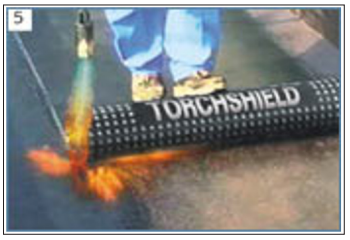
Plate 1: Heat (torch) application of polymer modified bitumen
membranes.
Source: Construction Update, (2012)
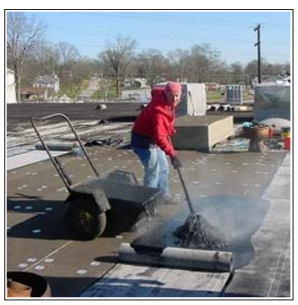
Plate 2: Hot application of polymer modified bitumen membranes.
Source: Davidhazen.com, (2017)
Cementitious Waterproofing
Cementitious waterproofing is the easiest method of waterproofing
in construction. The materials for cementitious waterproofing
are easily available from suppliers of masonry products, and
they are easy to mix and apply. It could be applied using a long
handle brush which makes the work easier or it could be mixed
with concrete [8]. A picture showing the application process can
be seen in plate 3.
There are basically two forms of cementitious water proofing, both
of which are non-decorative. The first consists of Portland cement,
fine aggregate, and sometimes acrylic or other plastic admix. The
second form of cementitious waterproofing is hydraulic cement,
which is a compound of cement with rapid setting non-shrinking
hydraulic materials. Hydraulic cements are used for many purposes
which include sealing holes, cracks, and open joints.
The principal disadvantage is that cementitious products do not
contract or expand to any degree worth mentioning, though they
will prevent water penetration but will not tolerate joint or crack
movement [9]. Therefore, cracks or joints in buildings need to
be treated specially.
Cementitious Crystalline Waterproofing Material for Concrete
Cementitious crystalline waterproofing material for concrete
was invented decades ago; it makes up for the shortcomings
of traditional waterproofing materials. Cementitious capillary
crystalline waterproofing coating is a kind of powdery material
substrate on cement and quartz sand, incorporated into a variety
of active chemical substances [10].
Crystalline technology is the major class of integral waterproofing.
They react with calcium hydroxide and other products of cement
hydration and form non soluble crystals that plug and fill the pores
and micro cracks in the presence of water [11]. It works from both
the positive exteriors and negative interiors and even after years.
It seals cracks automatically that are not more than 4mm wide. It
can form stable crystal by polymerization to prevent water, so it
may play a role in remedying a defect automatically [10].
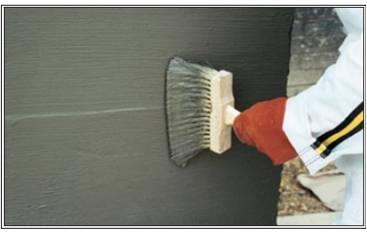
Plate 3: Application of Cementitious Waterproofing Material
Source: Arcon supplies, (2017).
Comparative Study of Conventional and Modern
Waterproofing Techniques
Water seepage can cause damage to buildings and thus, the
need for waterproofing and selecting the right waterproofing
materials [11]. Saurabh and Ghadge, (2016) reported of a study
that involved traditional (tarfelt, Brick bat coba) and modern
(coatings, integral) approaches to waterproofing, in a comparative
study involving both materials. The cost, durability and ease of
use of the various waterproofing methods were the criteria used
in drawing conclusions in the study.
Findings from the study revealed that traditional waterproofing
methods were relatively less expensive to install, easy to use
but were not long lasting and as a result not economical in the
long run. Modern waterproofing methods on the other hand, are
quite expensive compared to traditional methods, and are easier
to install. They also had a more lasting effect and, in the case of
integral waterproofing, they last the entire life time of the concrete,
thus, making modern waterproofing materials more economical
in the long run [11].
Research Methodology
Approach and Design
Mixed method approach was used for this study, and this involved
the use of quantitative and qualitative approaches. Quantitative
approach involves the generation of data in quantitative form
which can be subjected to extensive quantitative analysis in a
formal and rigid fashion, while qualitative approach on the other
hand is concerned with subjective assessment of attitudes, opinions
and behaviours [12]. A descriptive survey design was also adopted.
Descriptive research includes surveys and fact-finding enquiries
of different kinds, the major purpose of descriptive research is
the description of the state of affairs as it exists at present [12]. In
this study, information was got through personal interviews and
questionnaires, which were physically administered by the authors.
The study was carried out within the confines of Akure metropolis,
and the Arakale market in Akure was visited for existing and
current market prices of waterproofing materials. There, two
sample products were selected, comprising bituminous felt and
cementitious crystalline waterproof coating for concrete. The
cost of the two samples was also determined from the various
tradesmen of the products. The costs of installing the materials
were also obtained from various artisans on the field and an
average of cost implication was arrived at by a quantity surveyor
by using bill of quantities (BOQ).
Besides the visit to Arakale market, data collection was also sought
out from the information concerning the cost of installation of these
materials as obtained from quantity surveyors and contractors.
Data Collection
Both primary and secondary data were used in this research.
Primary data were obtained by conducting interviews and
administering questionnaires as well as market surveys. The
interview method of collecting data involved presentation of
oral-verbal stimuli questions and replies in form of oral-verbal
responses, while a questionnaire containing a set of questions
was arranged in a definite order to elicit information from
respondents [12]. However, secondary data were sourced from
online brochures, published and unpublished articles written on
bituminous felt and cementitious crystalline waterproof materials
for concrete.
The interview questions were arranged in such a manner that
structured questions were for the quantitative data and unstructured
for the qualitative data. The questions were designed to obtain
information on the experiences of various building professionals
in the use of the materials under study.
Data Analysis
The data obtained were recorded, coded and tabulated. Bills of
quantities were prepared for both materials using the current
market prices and labour cost of materials. The data were tabulated
because it facilitated the process of comparison and provided
the basis for the various statistical computations used. A bar
chat (figure 1) was also used to show comparisons between the
two materials. After data was collected and collated, they were
analysed using SPSS version 20.
Results
Calculations for the Cost of Purchasing Cementitious
Crystalline Waterproofing
Materials (CCWPM) for Concrete.
The calculations were done for two options for the application
of cementitious crystalline waterproofing materials for concrete.
The first option was for the application of cementitious crystalline
waterproofing material for concrete to be used in the casting of a
150mm thick concrete slab. For the casting option, the concrete
mix ratio was assumed to be 1:2:4. While the second option
was for the application of cementitious crystalline waterproofing
material for cement to be used in the plastering of a 12.5 mm thickmix. For the last option, it was assumed that the mix ratio for the
mortar was 1:4. These two options were arrived at and adopted
for this study since concrete slabs thickness is usually 150mm and
plaster?s thickness is usually 12.5mm. Therefore, 12.5 mm was
considered and adopted as the thickness of cement plaster over
concrete slabs or horizontal walls that involve the use of CCWPM.
The area of the concrete slab that was used throughout the study
for the calculations was uniform, although it was arbitrarily chosen
as 5.1 x 6.45 m2
.
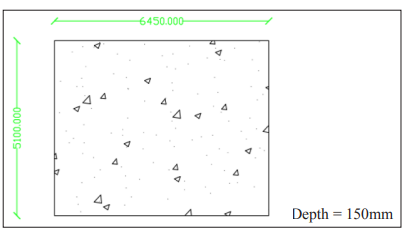
Figure 2: showing dimension of concrete slab in millimetre (mm).
Source: Author?s archive, 2019.
Option 1 (For 150 mm Thick Concrete Slab)
Volume of concrete = 5.100m x 6.450m x 0.150m = 4.934m3.
Mix ratio: 1:2:4.
Therefore: 1 + 2 + 4= 7.
Therefore: 1/7 x 4.934m3
= 0.705m3
.
Therefore: 4.934m3 / 0.705m3 = 6.99 cement bags of 50kg, which
is approximately 7 no. of 50kg bags of cement.
One bag of 500g of cementitious crystalline waterproofing material
=⩵750.
Principle of application is 500g of cementitious crystalline
waterproofing material to 1 50kg cement bag according to the
manufacturer of the product gotten from the market.
Therefore: 7 bags of 500g of cementitious crystalline waterproofing
material for 7 cement bags of 50kg = ⩵750 x 7 = ⩵5,250.
Also cost of 1 bag of cement is ⩵ 2,500. Therefore, 7 x ⩵ 2,500
= ⩵17,500
Cost of 7 bags of CCWPM + 7 bags of cement = ⩵5,250 + ⩵17,500
= ⩵ 22,750
Therefore, cost per m3 = ⩵22,750/4.934m3
= ⩵ 4,611.00
Option 2 (For Plastering 150 mm Thick Concrete Slab With
a Screed Of 12.5mm Thick)
Volume of mortar needed for the top and bottom sides = 5.1m x
6.45m x 0.125m x 2 = 8.22m3
Volume of mortar needed for both sides = 5.1m x (0.15+0.125+0.125)
m x 0.125m x 2 = 0.228m3
.
Total volume of mortar needed = 8.22m3
+ 0.228m3
= 8.45m3
.
Mix ratio: 1:4.
Therefore: 1 + 4= 5.
Therefore: 1/5 x 8.45m3
= 1.69m3
, which is approximately 2 cement
bags of 50kg,
One bag of 500g of cementitious crystalline waterproofing material
= ⩵750
Principle of application is 500g of cementitious crystalline
waterproofing material to 1no of 50kg cement bag according to
the manufacturer to the product gotten in from the market.
Therefore: 2no of 500g of cementitious crystalline = ⩵750 x 2
= ⩵1,500.
And 2 no bags of 50kg cement bags = 2 x ⩵ 2,500 = ⩵ 5,000
Therefore, total cost for cement bags and cementitious crystalline
= ⩵ 5,000 + ⩵1,500 = ⩵7,500
Therefore, cost per m3 = ⩵7,500/8.45m3 = ⩵888.00
Calculations for the Cost of Purchasing Bituminous Felt
The calculations done were based on the cost of 2mm and 3mm
thick bituminous felt respectively.
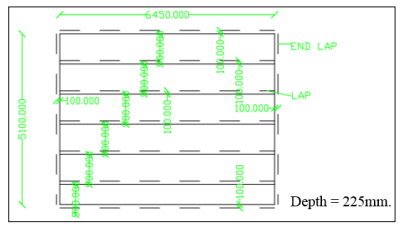
Figure 3: showing application of bituminous felt in millimetre
(mm).
Source: Author?s archive, 2019.
Minimum side lap = 100mm = 0.1m.
One run = 6.450m + 0.2m lap = 6.650.
Number of runs needed = 6.
1 yard of bituminous felt is 1m by 36 inches.
1inch = 2.54cm = 0.0254m.
Therefore: 6.650m/0.0254m = 261.811inches.
36inches = 1yard.
Therefore: 6.650m = 261.811inches/36inches = 7.272yards.
Number of yards needed for one run = 7.272yards which is
approximately 7.3yards needed.
Number of yards needed for 6 runs = 7.3 x 6 = 43.8 ≈ 44 yards.
Option 1 for 2mm Thick Bituminous Felt
Cost of 1yard of 2mm thick bituminous felt = ⩵800.
Therefore 44 yards of 2mm thick bituminous felt = ⩵800 x 44
= ⩵35,200.
Option 2 for 3mm Thick Bituminous Felt
Cost of 1yard of 3mm thick bituminous felt = ⩵1,000.
Therefore 44 yards of 3mm thick bituminous felt = ⩵1,000 x 44
= ⩵44,000.
Bill of Quantities (BOQ) for the Cost of Installing Cementitious
Crystalline Waterproofing Materials in Concrete
This section shows BOQ prepared for the two options for the
application of cementitious crystalline waterproofing materials
for concrete. In the tables below it was observed that the cost of
workmanship was nil, and this is due to the fact that the material
(which is in powder form) is added to dry cement then properly
mixed, before the slab is cast or plastered thus no cost of labour
is incurred.
Table 1: BOQ option 1 for cementitious crystalline waterproofing material for concrete
| Item |
Description |
Unit |
Qty |
Rate (⩵) |
Cost (⩵) |
| 1 |
Cost of cementitious crystalline
waterproofing material in concrete. |
m 3 |
0.705 |
32,269 |
22,749 |
| 2 |
Cost of workmanship. |
______ |
____ |
_________ |
_________ |
| Total |
|
|
|
|
≈ ⩵22,750 |
Table 2: Showing BOQ option 2 for cementitious crystalline waterproofing material for 12.5mm plaster
| Item |
Description |
Unit |
Qty |
Rate (⩵) |
Cost (⩵) |
| 1 |
Cost of cementitious crystalline
waterproofing material in concrete |
m 3 |
1.644 |
4,562 |
7,499 |
| 2 |
Cost of workmanship. |
______ |
____ |
_________ |
_________ |
| Total |
|
|
|
|
≈ ⩵7,500 |
Source: Author?s market survey, 2019.
In comparing tables 1 and 2, it can be deduced that it is more expensive to cast the same floor area of concrete (N22,750) by integrating
cementitious crystalline waterproofing material into the mix than to plaster or screed the same floor area using the same material at
(N7,500). This is because the quantity needed for CCWPM is more in concrete (7 bags of cement + 7bags of ccwpm) than in plastering
the same floor area (2 bags of cement + 2 bags of ccwpm), considering the thickness of both construction elements.
Bill of Quantities Showing the Cost of Installing Bituminous Felt
This section shows BOQs prepared for both 2mm and 3mm thick bituminous felt and their various cost implications by using gas
and felt adhesives. In the tables below it has been assumed that 20liters of bituminous felt adhesive will be sufficient for covering the
specified floor area of 5.1m2 x 6.45m2. The cost of labour, hot mopped asphalt and the bituminous felt were gotten from interviews
with three artisans who install bituminous felt and the average costs were used for these calculations. Tables 3 & 4: Show BOQ
options 1 & 2 for 2mm thick bituminous felt using adhesives and gas respectively, while tables 5 & 6 show BOQ options 1 and 2 for
3mm thick bituminous felt using adhesives and gas respectively.
Table 3: BOQ option 1 for 2mm thick bituminous felt.
| Item |
Description |
Unit |
Qty |
Rate (⩵) |
Cost (⩵) |
| 1 |
Cost of 2mm thick bituminous felt |
Yards |
44 |
800 |
35,200 |
| 2 |
Cost of bituminous felt adhesive |
Liters |
20 |
400 |
8,000 |
| 3 |
Cost of workmanship. |
m 2 |
32.895 |
650 |
22,000 |
| Total |
|
|
|
|
N65,200 |
Source: Author?s market survey, 2019.
Table 4: BOQ option 2 for 2mm thick bituminous felt
| Item |
Description |
Unit |
Qty |
Rate (⩵) |
Cost (⩵) |
| 1 |
Cost of 2mm thick bituminous felt |
Yards |
44 |
800 |
35,200 |
| 2 |
Cost of gas |
Kg |
2 |
500 |
1000 |
| 3 |
Cost of workmanship and lease of touch. |
m 2 |
32895 |
650 |
22000 |
| Total |
|
|
|
|
N58,200 |
Source: Author?s market survey, 2019.
In comparing tables 3 & 4, it can be deduced that it is cheaper to use gas than adhesives in installing 2mm thick bituminous felt over
a surface area of 5.1 x 6.45m2, while the N7,000 difference may appear small in amount, with larger surface areas, it will definitely
become costlier.
Table 5: BOQ option 1 for 3mm thick bituminous felt
| Item |
Description |
Unit |
Qty |
Rate (⩵) |
Cost (⩵) |
| 1 |
Cost of 2mm thick bituminous felt |
Yards |
44 |
1000 |
44000 |
| 2 |
Cost of bituminous felt adhesive |
Liters |
20 |
400 |
8000 |
| 3 |
Cost of workmanship. |
m 2 |
32895 |
650 |
22000 |
| Total |
|
|
|
|
⩵74,000 |
Source: Author?s market survey, 2019
Table 6: BOQ option 2 for 3mm thick bituminous felt
| Item |
Description |
Unit |
Qty |
Rate (⩵) |
Cost (⩵) |
| 1 |
Cost of 2mm thick bituminous felt |
Yards |
44 |
1000 |
44000 |
| 2 |
Cost of gas |
Kg |
2 |
500 |
1000 |
| 3 |
Cost of workmanship and lease of touch. |
m 2 |
32895 |
650 |
22000 |
| Total |
|
|
|
|
N67,000 |
Source: Author?s market survey, 2019.
In comparing tables 5 and 6, the same scenario plays out like in
tables 3 and 4, with a difference of N7,000 in using adhesives
or gas. This result shows that a difference of N7,000 is realized
between using adhesives or gas. However, since 3mm thick
bituminous felt is thicker in width than 2mm, it is advisable to use
3mm than 2mm, but there is a difference of N8,800 between using
3mm and 2mm with adhesives and gas, and this cost (N8,800)
will definitely increase as floor area increases.
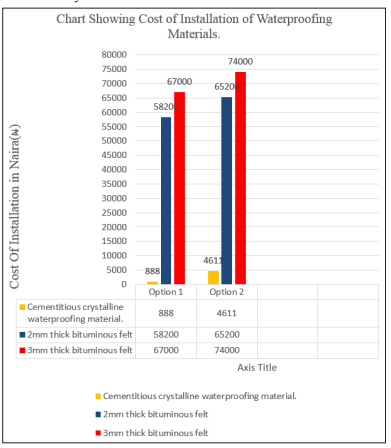
Figure 1: Bar chat comparing cost of installing bituminous felt and
cementitious crystalline waterproofing material. Source: Author?s
market survey, 2019.
The bar chart in Figure 1 clearly shows the difference in cost of
using cementitious crystalline waterproofing material, 2mm thick
bituminous felt and 3mm thick bituminous felt for the same floor
area of 5.1m2
x 6.45m2
= 32.89m2
. It can be clearly seen that
ccwpm is cheaper to use in concrete and in plaster compared to
2mm thick bituminous felt and 3mm bituminous felt that covers
the same surface area.
Summary of Results
From the cost analysis done which showed the cost of purchase
and cost of installation of cementitious crystalline waterproofing
material and bituminous felt, it was established that:
- The cost of purchase of bituminous felt is more than the
cost of purchase of cementitious crystalline waterproofing
material.Summary of Results
- There is no labor cost for the application of cementitious
crystalline waterproofing material as the material is added
to the cement during the casting or plastering of the concrete
slab.Summary of Results
- The cost of purchase and installation of 3mm thick bituminous
felt is more than the cost of purchase and installation of 2mm
thick bituminous felt.
- The cost of installation of 2mm and 3mm thick bituminous
felt is higher than the cost of installation of cementitious
crystalline waterproofing material.
- The cost of maintenance of bituminous felt is high compared to
the cost of maintaining cementitious crystalline waterproofing
material. This is due to the need to replace damaged portions
of the material during maintenance, also because bituminous
felt would need to be replaced after expiration of its durability
period. Cementitious crystalline waterproofing material on the
other hand can last throughout the life span of the concrete
even as there is no need for replacement.
Discussions
This study found out through calculations of existing market
prices that the cost per m3 of casting 150mm thick of r.c slab
using ccwpm is N 4,611 , while the cost of plastering the same
cubic meter using ccwpm is N 888. This tends to show that it is
more expensive to cast concrete slabs using ccwpm than plastering
the same cubic meter using ccwpm. With this knowledge, it will
encourage clients and contractors to make early decisions of
considering the use of ccwpm in the construction of concrete,
concrete slabs or using ccwpm in plastering. However, in buildings
where construction was completed without the use of dpm (damp
proof membrane) or ccwpm in casting concrete slabs and moisture
tends to adversely affect the superstructure of such buildings, it is
advisable to use ccwpm in plastering or re-plastering as the case
may be, since it was omitted at the initial stage during construction,
because it is cheaper to install, with no workmanship cost and no
maintenance cost throughout the lifespan of the building.
Findings from this study further reveal that 3mm thickness of
bituminous felt costs N44,000, while that of 2mm thickness costs
N35,200, (for the same floor area) indicating N9,800 difference
between both materials. While this difference may appear small,
when large surface areas are covered, the difference in cost may
become large. Also, while both materials are good and only
different marginally by 1mm thickness, if there are adequate and
sufficient funds available, it is advisable to opt for 3mm bituminous
felt for water proofing construction because of its thicker gauge.
However, where there is paucity of funds for a construction project,
the building professionals should opt for 2mm thick bituminous
felt material, but should be adequately and well finished using
adhesives or touch flame.
In the use of adhesives or touch flame the study found that it
is cheaper to use touch flame for sticking bituminous felt than
using adhesives for binding. It was discovered that whether 2mm
or 3mm is used on site, the difference in cost is N7000 betweenboth materials. The study found that it will cost N65,200 to
use adhesives for 2mm thick bituminous felt, while it will cost
N58,200 to use touch flame for 2mm thick bituminous felt on
the same surface area. It also found that it will cost N74,000 in
using adhesives for 3mm bituminous felt and N67,000 in using
touch flame for 3mm on the same surface area. While it appears
like using touch flame is cheaper (if it is properly done), than
using adhesives (if well done too), using adhesives for bonding
bituminous felt may detach in the continuous presence of water
seepage and high moisture. Therefore, building professionals
should take decisions early on which water proofing materials
should be used on construction projects on time, considering all
the factors stated above in this study. However, the study advises
further that in projects that were completed and plastered without
considering water proofing materials, the cost of hacking surfaces
or removing parts of previous plaster before re-plastering will
increase the cost of re-plastering with the new wpm in mind,
and re-plastering such surfaces is cheaper when ccwpm is used
compared to using ccwpm in concrete.
Recommendations and Conclusion
Recommendations
After a diligent study on bituminous felt and cementitious
crystalline waterproofing materials for concrete the following
recommendations were made to guide in the selection of a
waterproofing material for concrete:
Extensive research and study of the various waterproofing options
should be available before deciding on which waterproofing
materials to go for. (During the course of the study it was observed
that majority of the professionals who filled the questionnaires did
not know about cementitious crystalline waterproofing material.
They would therefore not recommend a material for use if they
are not aware that the material exists in the market. It would be of
great benefit if building professionals continually make adequate
research and findings about new construction materials, not only
in waterproofing techniques, because as technology advances,
newer and better solutions to waterproofing and construction
problems will emanate).
Proper study on the waterproofing material and the application
method that has been decided to be used must be done on time
before construction commences. There are various application
techniques, various temperature and environmental conditions
in which different waterproofing materials are to be applied. If
these conditions are not in place or attention is not paid to proper
application techniques, there is the probability of waterproofing
failure. So, professionals ought to be aware of the details involved
before they decide on which material to use.
- For future construction works on concrete, cementitious
crystalline waterproofing materials should be used instead
of bituminous felt as this is more cost effective in the
short run and also in the long run. Cementitious crystalline
waterproofing material also protects concrete from within
and has the ability to fill micro-pores of concrete.
- For existing concrete works which have not been waterproofed,
cementitious crystalline waterproofing material should be
used during the plastering, the plastering should however be of sufficient thickness of 12.5mm but not exceeding 15mm.
- For buildings in which bituminous felt has already been
used for waterproofing, in subsequent maintenance or after
the expiration of the existing bituminous felt, it should be
replaced with better updated versions of modified bituminous
felt material that are more durable than the non-modified
version. The affected area should be removed and re-plastered
with 12.5mm thick of cementitious crystalline that has been
thoroughly mixed with mortar for re-plastering.
Conclusion
This study was able to carry out in-depth research by comparing
two waterproofing materials for concrete, through market surveys,
comparing prices of procuring such materials through BOQs and
cost of maintenance of individual items, including interviews
with construction professionals. Findings from the study were
outstanding from the comparisons carried out on the two materials,
as it revealed that cementitious crystalline waterproofing material
has not been given widespread recognition, though it is more
cost effective compared to bituminous felt. The cost of purchase,
installation and maintenance of bituminous felt outweighs that of
cementitious crystalline waterproofing material. Cementitious
crystalline waterproofing material is not widely known and used by
construction professionals around this clime in Nigeria, but in the
future, it may become the most widely used waterproofing material
if the knowledge and awareness of the material is increased. Public
and private buildings, especially private residential buildings
that have been inhabited that omitted the use of DPC (damp
proof course) or DPM (damp proof membrane) due to moisture
seepage through concrete, can opt for cementitious crystalline
waterproofing material as a last resort, since it will be extremely
difficult to place DPC or DPM when construction is completed
and the buildings have been inhabited or put in use. Considering
the cost of construction with ccwpm and bituminous felt in a
building, it is obviously worth it, because of the inconveniences
and defacing aesthetics associated with dampness and water
seepage into concretes within buildings [ 13-15].
This study only observed analyses involving horizontally cast
reinforced concretes, horizontally plastered surfaces, and vertically
inclined plastered surfaces, but did not consider vertically cast
concrete (i.e reinforced columns) in its analyses and calculations.
Therefore, authors may consider other concrete castings like
the vertically inclined cast concrete etc. For further studies,
researchers may compare two or more other waterproofing
materials for concrete besides the ones that were studied here, and
make comparisons with this study in order to ascertain the most
effective, and the most economically viable of all the waterproofing
materials, so as to save money for optimum efficiency.
References
- Greeno R, Chudley R (2010) Building construction handbook
(8th ed.). London: Taylor and Francis.
- Australia, Cement Concrete, Aggregates (2010) Concrete
Basics: A Guide to Concrete Practice, (7th ed.) 7: 2-3, 7: 6-8.
- Construction Knowledge (2017) Concrete. Retrieved from
http://www.constructionknowledge.net/concrete/concrete_
basics.php
- Construction Updates (2012) Water proofing for
roofs. Retrieved from Construction Updates: https://
constructionduniya.blogspot.com/2012/02/water-proofingfor-roofs.html
- Henry J C, Peter R S (2004) Dictionary of architectural and
building technology (4th ed.). London: Spoon press.
- The Asphalt Roofing Manufacturers Association Report
(2011) The Bitumen Roofing Industry - A Global Perspective:
Production, Use, Properties, Specifications and Occupational
Exposure.
- Tradesmanroofing.com (2017) Tradesman, 2017. SBS
vs. APP- what?s the difference? Retrieved from www.
tradesmanroofing.com
- Theconstructor.org. (2017) Types of concrete waterproofing
materials. Retrieved from https://theconstructor.org/concrete/types-waterproofing-methods-construction/10856/
- Concrete Network (2017) Choosing Waterproofing Products.
Retrieved from www.concretenetwork.com/waterproofing
concrete foundations/cementitious waterproofing.html.
- Guo-Zhong L, Wei-Xuan Z, Li-Juan Z, Xiu-Jua (2014) The
Analysis on Mechanism and Application of Cementitious
Capillary Crystalline Waterproofing Coating. Proceedings
of the International Conference on Mechanics and Civil
Engineering (ICMCE 2014), held at Wuhan 156 - 161.
- Saurabh B G (2016) Comparative Study of Conventional and
Modern Waterproofing Techniques. International Journal of
Engineering Research, 5: 32-36.
- Kothari C (2004) Research methodology, methods and
techniques (2nd ed.). New Delhi: New Age International
(P) Ltd., Publishers.
- Construction Review (2015) Waterproofing concrete: why
waterproofing is a necessary exercise in construction. Retrieved
from Construction Review: https://constructionreviewonline.
com/2015/11/waterproofing-concrete/
- Fixit (2017). Dr. Fixit General waterproofing brochure.
Retrieved from Dr. Fixit.co: http://www.drfixit.co.in/library/
guides/brochure-4-0.html
- Washington State Department of Transportation in
Cooperation with United States Department of Transportation.
View PDF






